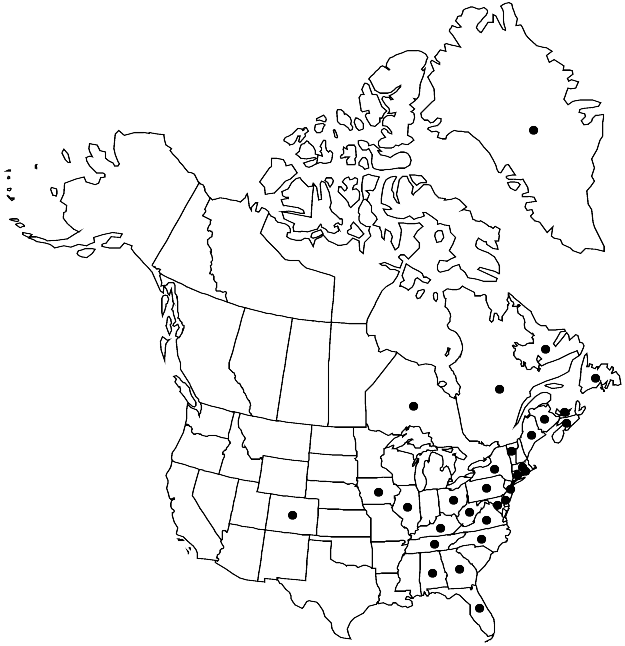Mnium hornum
Sp. Musc. Frond., 188. 1801.
Plants 1.5–5 (–8) cm. Stems red or brown. Leaves green, yellowish, or occasionally dark green, slightly contorted, usually coiled and twisted when dry, sometimes to one side of stem, narrowly elliptic, narrowly ovate-elliptic, or ovatelanceolate, 3–6 mm, proximal stem-leaves narrowly triangular; base short-decurrent; margins pale-brown, 2-stratose, toothed to below mid leaf, sometimes to near base, teeth paired, large, sharp; apex acute or acuminate, apiculate or cuspidate, cusp sometimes toothed; costa ending well below apex or occasionally percurrent, distal abaxial surface strongly toothed, adaxial surface occasionally toothed; medial laminal cells ± isodiametric or short-elongate, (15–) 17–26 (–30) µm, slightly smaller towards margins, not in diagonal rows, sometimes in longitudinal rows, not or weakly collenchymatous, blue postmortal color absent; marginal cells linear, in (2–) 3–4 rows. Sexual condition dioicous. Seta single. Capsule pale-brown, 3–5 mm; operculum conic-mammillate, rarely short-rostrate; exostome yellowish-brown. Spores 30–35 µm.
Phenology: Capsules mature summer.
Habitat: Banks along streams, shorelines, cliff faces on moist, sandy soil, humus
Elevation: low to moderate elevations
Distribution

Greenland, N.B., Nfld. and Labr., N.S., Ont., P.E.I., Que., Ala., Colo., Conn., Del., Fla., Ga., Ill., Iowa, Ky., Maine, Md., Mass., N.J., N.Y., N.C., Ohio, Pa., R.I., Tenn., Vt., Va., W.Va., South America, Europe, Asia, Africa
Discussion
Mnium hornum is one of the most distinctive members of the genus. The long, narrow leaves and strongly toothed abaxial costae with teeth of 1(–3) cells are diagnostic.
Selected References
None.